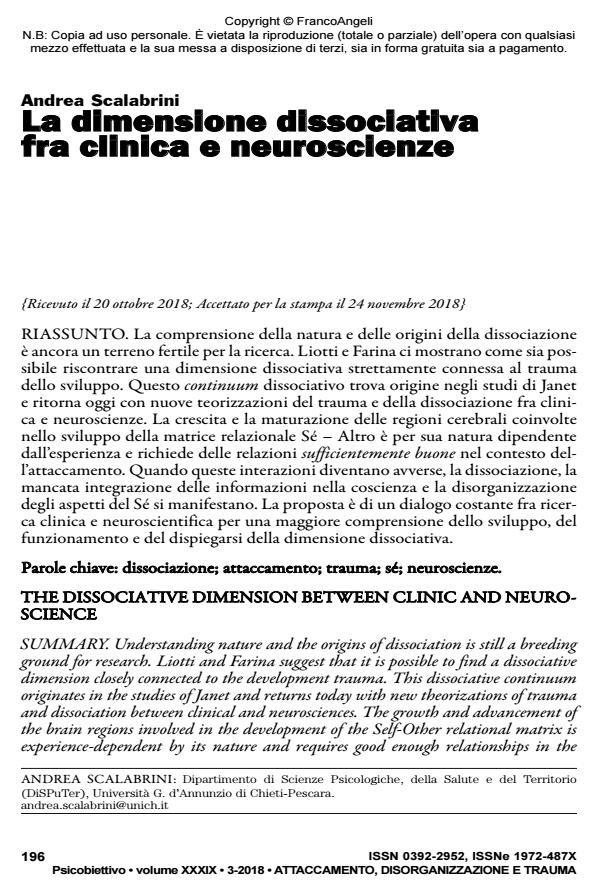La dimensione dissociativa fra clinica e neuroscienze
Titolo Rivista PSICOBIETTIVO
Autori/Curatori Andrea Scalabrini
Anno di pubblicazione 2018 Fascicolo 2018/3
Lingua Italiano Numero pagine 6 P. 196-201 Dimensione file 116 KB
DOI 10.3280/PSOB2018-003019
Il DOI è il codice a barre della proprietà intellettuale: per saperne di più
clicca qui
Qui sotto puoi vedere in anteprima la prima pagina di questo articolo.
Se questo articolo ti interessa, lo puoi acquistare (e scaricare in formato pdf) seguendo le facili indicazioni per acquistare il download credit. Acquista Download Credits per scaricare questo Articolo in formato PDF

FrancoAngeli è membro della Publishers International Linking Association, Inc (PILA)associazione indipendente e non profit per facilitare (attraverso i servizi tecnologici implementati da CrossRef.org) l’accesso degli studiosi ai contenuti digitali nelle pubblicazioni professionali e scientifiche
La comprensione della natura e delle origini della dissociazione è ancora un terreno fertile per la ricerca. Liotti e Farina ci mostrano come sia possibile riscontrare una dimensione dissociativa strettamente connessa al trauma dello sviluppo. Questo continuum dissociativo trova origine negli studi di Janet e ritorna oggi con nuove teorizzazioni del trauma e della dissociazione fra clinica e neuroscienze. La crescita e la maturazione delle regioni cerebrali coinvolte nello sviluppo della matrice relazionale Sé - Altro è per sua natura dipendente dall’esperienza e richiede delle relazioni sufficientemente buone nel contesto dell’attaccamento. Quando queste interazioni diventano avverse, la dissociazione, la mancata integrazione delle informazioni nella coscienza e la disorganizzazione degli aspetti del Sé si manifestano. La proposta è di un dialogo costante fra ricerca clinica e neuroscientifica per una maggiore comprensione dello sviluppo, del funzionamento e del dispiegarsi della dimensione dissociativa.
Parole chiave:Dissociazione; attaccamento; trauma; sé; neuroscienze
Andrea Scalabrini, La dimensione dissociativa fra clinica e neuroscienze in "PSICOBIETTIVO" 3/2018, pp 196-201, DOI: 10.3280/PSOB2018-003019